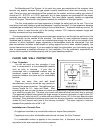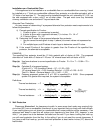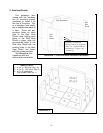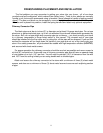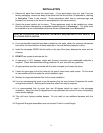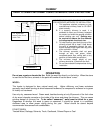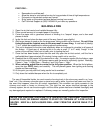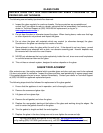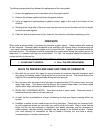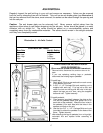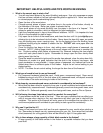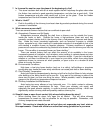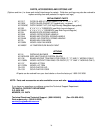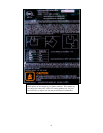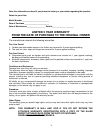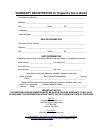
16
The following steps should be followed for replacement of the door gasket:
1. Ensure the appliance is not in operation and is thoroughly cooled.
2. Remove the old door gasket and clean the gasket channel.
3. Using an approved high-temperature gasket cement, apply a thin coat in the bottom of the
channel.
4. Starting at the hinge side of the door, work into the channel around the door unit, trim to length
and butt the ends together.
5. Close the door and allow three to four hours for the cement to set before restarting any fire.
CREOSOTE
When wood is burned slowly, it produces tar and other organic vapors. These combine with moisture
to form creosote. Creosote vapors condense in the relatively cool chimney flue of a slow-burning fire
– as a result, creosote residue accumulates on the lining of the flue. If ignited, this creosote makes an
extremely hot fire. The chimney should be inspected on a regular basis during the heating season, to
determine if a creosote build-up has accumulated. If it has, the creosote should be removed to
reduce the risk of chimney fire.
WAYS TO PREVENT AND KEEP UNIT FREE OF CREOSOTE
1. Burn with the air control fully open for several minutes at numerous intervals throughout each
day during the heating season, being careful not to over-fire the unit. This should remove the
slight film of creosote that accumulates during low burn periods.
2. Burn the stove with the draft control fully open for approximately 20-30 minutes every time you
apply fresh wood. This allows wood to achieve the charcoal stage faster, and burns wood
vapors which might otherwise be deposited within the system.
3. BURN ONLY SEASONED WOOD. Avoid burning wet or green wood. Seasoned wood is
wood that has been dried for at least one year.
4. A small, hot fire is preferable to a large, smoldering one that can deposit creosote within the
system.
5. Establish a routine for fuel, wood burner and firing technique. Check daily for creosote build-
up until experience shows you how often you need to clean to be safe. Keep in mind that the
hotter the fire, the less creosote is deposited, and weekly cleanings may be necessary in
milder weather, although monthly cleanings may be enough in the coldest months. Contact
your local authority for information on how to handle a chimney fire, and have a clearly-
understood plan to handle a chimney fire.
WARNING: THINGS TO REMEMBER IN CASE OF A CHIMNEY FIRE:
1. CLOSE DRAFT CONTROL 2. CALL THE FIRE DEPARTMENT



